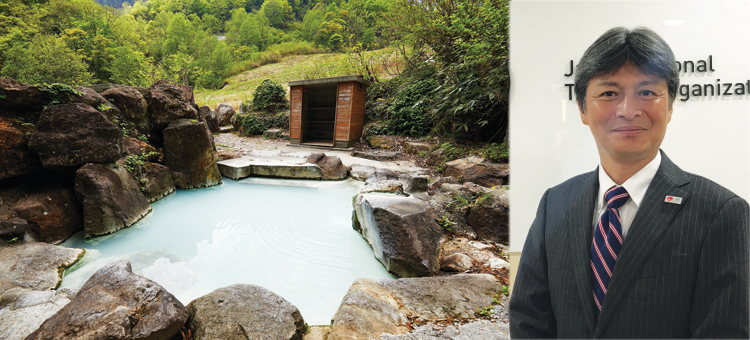Mumbai: Come summer 2020, tourism in Japan will enter a watershed moment with Tokyo set to host the World Summer Olympics. In the run-up to the Games, Japan is giving its infrastructure a massive makeover, ushering in a tourism renaissance of sorts. In its expansion plans for the Asian market, India features top of the chart. Kenichi Takano, Executive Director, Japan National Tourism Organisation (JNTO), New Delhi Office, India, talks about their big plans for India and beyond…
Japan is experiencing a historic tourism boom in the run-up to the 2020 Olympics. How is the country coping up on the infrastructure front?
Tokyo is all primed to host the 2020 World Summer Olympics. As Japan leads the world in terms of advanced technology, it is easier to provide high-quality service to visitors. Japan’s expansion plan to add more infrastructure facilities before the Olympics is well on track. There will be a high demand for accommodation during the Games. And so, many hotels are planning to increase capacity and make necessary changes to meet the soaring market demand.
You have achieved your 2020 target of 20 million FTAs five years ahead of the set deadline. Your revised target for 2020, reportedly, is 40 million! Is this achievable and how?
JNTO had set three different Tourism Policies to achieve this target:
- Utilising tourism resources for regional revitalization, putting emphasis on using the tourism resources efficiently
- Developing tourism industry as a new economic pillar by reviewing the old regulation. It aims at augmenting productivity, which is important for the tourism industry
- Improving travel infrastructure
Can you tell us about your major source markets? What percentage of total FTAs is from China? What are you doing to attract non-Asian tourists to Japan?
Japan’s major source markets are China, South Korea, and Taiwan. FTAs from China is pegged at 15.4 per cent (approx.). JNTO will also be introducing scores of new programmes like the ‘Japanese Specialist Programme’ to educate travel agents through e-learning.
The Golden Routes of Tokyo, Kyoto, and Osaka, are seeing most of the action. What are you doing to promote some of the lesser-known destinations?
JNTO is now planning to introduce new routes like the Alpine, Hokkaido, and Tohoku, and promote MICE and destination weddings for the Indian market. JNTO has also launched a website and e-learning programme for India.
How is the Indian outbound market performing? What kind of numbers did you attract in 2017 and what has been the YoY growth?
Indian outbound market has been performing well with each passing day. This is due to the growing sense of awareness among travellers from India about Japan being one of the safest cities in the world, with a beautiful and rich cultural heritage. Around 24 million tourists (84 per cent) visiting Japan are from Asia. Unfortunately, Japan is receiving only 1,34,400 tourists from India at present. So our main aim is to increase the tourist arrivals from India, US, and Europe.
Which customer segments travel from India to Japan? Which segments do you wish to promote?
Middle class and elite customer segments largely prefer Japan. JNTO will be taking measures to lure these two segments from India.
Tell us five attractive things about Japan that tourists from India may not be in the know of?
- For solo women travellers, Japan is the safest country in the world
- Instead of residing in the hotel, people can stay in Ryokan (Japanese-style Inns) to experience nature at close quarters.
- Traditional performing arts like Kabuki, Sado (Tea ceremony), Sumo (Japanese -style wrestling)
- The exotic Onsen (Hot Springs)
- Authentic Indian restaurants





